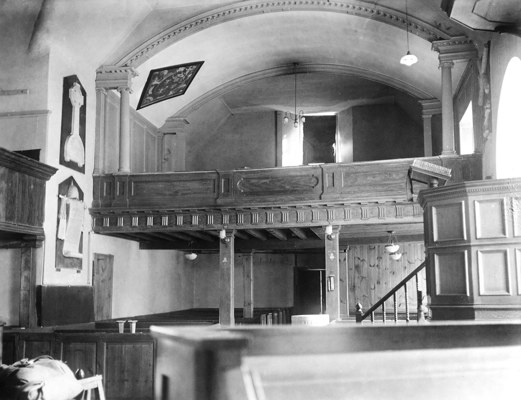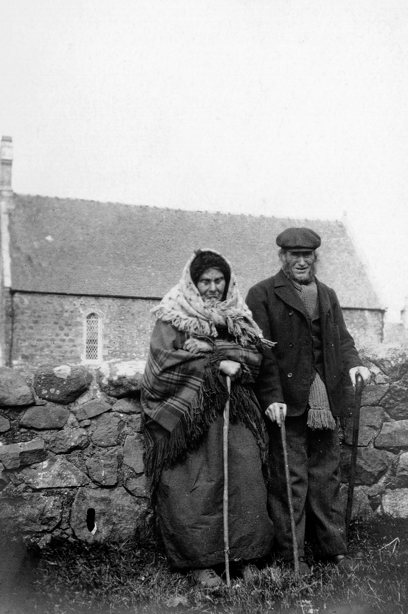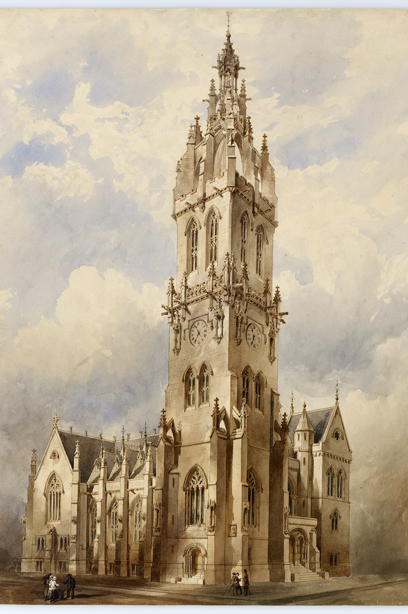The history of Christianity in Scotland is a turbulent one, a struggle played out over centuries.
Originally, this was between the Protestant and Catholic churches during the Reformation. Later, it was between the Protestant denominations of Episcopacy (which gave the monarch, landowners, and bishops influence over church affairs) and Presbyterianism (which offered a more democratic concept that gave ministers equal importance and autonomy).
The upheaval that followed the signing of the National Covenant in 1638 ultimately led to the formation of the Church of Scotland. However, even within Presbyterianism, there was much disagreement and ongoing division that resulted in the periodic founding of new denominations into the early 20th century.
As a result, not only were more church buildings needed for new Protestant congregations but their design also had to accommodate the new style of worship, where the pulpit became the main focus of the church interior. This historic ecclesiastical building boom meant that, even in small Scottish communities, there may be several churches each serving a different Christian denomination.
Cromarty East Church, Cromarty
After the Reformation of the 16th century, churches were built or altered to reflect new ways of worship. Where the liturgy at the altar is one of the primary focuses of the Catholic Mass, the minister preaching the Word became the main focus of attention during services. So much so that Presbyterian churches became known as ‘preaching boxes’.
To ensure that the preacher could be seen by the whole congregation the pews were arranged around three sides of the church and the pulpit, where he spoke from, was situated on the remaining wall.
Today, Cromarty East Church is an asset to the community in a new way, having been restored by Historic Churches Scotland from 2008 to 2012. While weddings are still held in the church, events such as the Cromarty Fiddle Festival also take place there.
Kilmuir Free Church, Skye
Strong differences of opinion as to how the Church of Scotland should be run led to various breakaway groups founding their own congregations for Christian worship in what was known as the ‘Great Disruption’ of 1843.
Several congregations on the Isle of Skye joined the Free Church which was vigorously opposed to the state having any influence over it. The Free Church joined with the United Presbyterian Church to form the United Free Church in 1900.
Not long after it was founded, Free Church ministers travelled all over Scotland to swear in witnesses or members of the new church in a missionary effort to ensure the future of their new church.
Edderton Parish Church, Highland preaching ark
This preaching ark or ‘preaching tent’ - which was used for outdoor services - is a rare example to have survived the passage of time. Created to raise a preacher a metre up from the ground, it was designed to be taken apart for transportation.
When the Free Church of Scotland was created, as a result of the Great Disruption of 1843, nearly a third of the Church of Scotland's ministers left to form a separate church.
Until premises for new churches could be built or found, breakaway congregations had to meet in the open air. In Edderton, the Balnagown Estate allowed the Free Church to use the disused old parish church, which they did from 1843 until the 1980s.
The preaching ark was initially kept in the church so that it could continue to be used for outdoor services in the surrounding area. Although it was no longer needed in time, it was kept in the church, perhaps as a historic reminder of the congregation’s effort to worship in the way they chose.
Glasite Meeting House, Edinburgh
Breakaway Christian movements, such as the Glasites, could be very small yet distinct in character. Founded in Dundee, the Glasites built several Meeting Houses in Scotland including one for Edinburgh designed by Alexander Black in 1835.
This wonderfully intact worship space has a monumental three-tier pulpit which was added in 1873. Upstairs there is a feasting room that was used each Sunday by the congregation for a communal meal, a custom which led to the Glasites being nicknamed the ‘Kail Kirk’.
Although this sacred space wasn't used by another congregation when the Glasites moved out in 1989, the building became a focus of the conservation movement. For several years, after its closure as a place of prayer, it housed the Architectural Heritage Society of Scotland which was instrumental in its preservation.
Free St George’s Church, Edinburgh
New forms of worship resulted in architects being offered the opportunity to experiment when designing or adapting churches. The Free Church, in particular, was keen to express its departure from familiar church practice through its architecture.
In the late 1860s, David Bryce offered his clients – who were looking to build Free St George’s church - alternative designs in classical, Italian and Gothic Revival styles.
The Italian version was preferred but, for economic reasons, it was initially built without the tower. Bryce had died by the time the tower was commissioned a decade later, so it was designed by Robert Rowand Anderson, who had briefly been a partner in Bryce’s practice.
St Vincent Street United Presbyterian Church, Glasgow
In 1857, when the congregation of St Vincent Street United Presbyterian Church was looking for a distinctive design for their new church, Alexander ‘Greek’ Thomson was the ideal choice of architect.
Not only was Thomson a maverick designer with extensive experience – having already designed several churches for another new denomination, the Free Church – he was also a United Presbyterian member himself.
As his nickname suggests, his designs were largely inspired by classical Greek architecture, but he also incorporated unique elements into his design. For example, he included leafy capitals for its cast iron columns which have no precedent in classical architecture.
This is the only one of Thomson's churches to survive intact. However, its future is now uncertain as it was forced to close in 2021 following damage to its ceiling.
Places for Prayer continued
In times of distress, many find solace and comfort in sacred spaces. From offering safe refuge to illegal meeting places, learn about Scotland's places of prayer in times of trouble.













